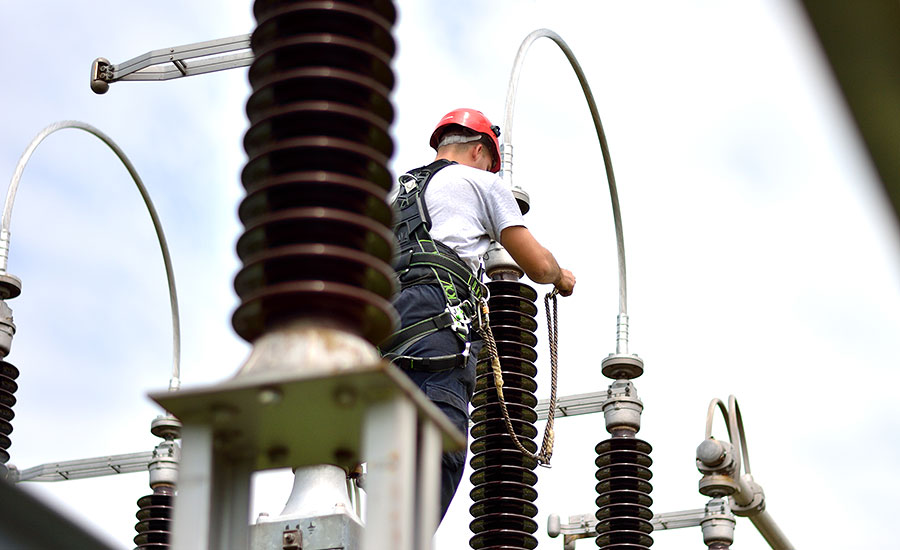A person can be at risk of injury during a fault – any abnormal electrical current -- simply by standing near a grounded object that has an electrical charge. According to OSHA, a person on the ground is subjected to risk during an electrical fault by attempting to move toward or away from the grounding point. Step potential is the voltage between the feet of a person standing near an energized grounded object. The objective is to minimize the voltage between the feet while escaping hazardous situations.
Downed wires, energized vehicles or tools, and energized, grounded trees or tree limbs are examples of electrical step potential hazards.
What to do?
According to OSHA1, you must assure each of your employees has been trained to recognize and is appropriately qualified to work near any electrical hazard that might be encountered at a worksite. To escape step potential hazards, OSHA recommends using very short, shuffling steps, or move away from the electrical fault keeping both feet close together. Employees at risk should avoid taking large steps, and avoid direct contact or indirect contact with any objects as they exit the hazard area.
In contrast to step potential, touch potential is the voltage between the energized grounded object and the feet of a person in contact with the object.
To understand step and touch potential, you need to understand how energy dissipates across conductive objects. During broken pole or downed wire conditions, good conductors exist that provide a path to ground including metal fences, wet soil and puddles. Other conductors that allow current to travel to ground are trees, wood fences and utility poles. Wood is typically thought of as an insulator, but wet wood will conduct electric current. 2
When an energized conductor falls across a chain-link fence or directly to the ground, the object and immediate area become energized, creating a zone of high voltage in relation to the ground. Actual voltage depends on the source, resistance of the object and soil conditions -- material and moisture. The dissipation of voltage from a grounded conductor – or from the grounded end of an energized grounded object – is called the ground potential gradient. Voltage is highest at the source and fades as the energy moves across the ground. 3
Two OSHA standards offer step potential protection:
- 1910.136(a)requires at-risk employees to use protective footwear when its use will protect the affected employee from an electrical hazard, such as a static-discharge or electric-shock hazard, that remains after the employer takes other necessary protective measures.
- 1910.269(p)(4)(iii)(C) requires employees to be protected from hazards that could arise from mechanical equipment contact with energized lines or equipment. Employers must take protective measures in addition to grounding of equipment. Step potential protection is the result of this change. Site-specific hazards should be identified in each on-site job briefing (see 1910.269(c)) so that it can be determined if additional precautions are needed. 4
References
- OSHA Quick Card “Electrical Step potential hazard Avoidance,” http://www.osha.gov/SLTC/treecare/index.html
- Cornhusker Public Power District, “Step Potential Around Power Lines,” http://cornhusker-power.com/safety/step-potential/
- Cornhusker Public Power District, “Step Potential Around Power Lines,” http://cornhusker-power.com/safety/step-potential/
- “Voice of Experience: Requirements for Step Potential Protection,” Danny Raines, Incident Prevention magazine, July-August, 2016, https://incident-prevention.com/ip-articles/tailgate-safety-topics/voice-of-experience




